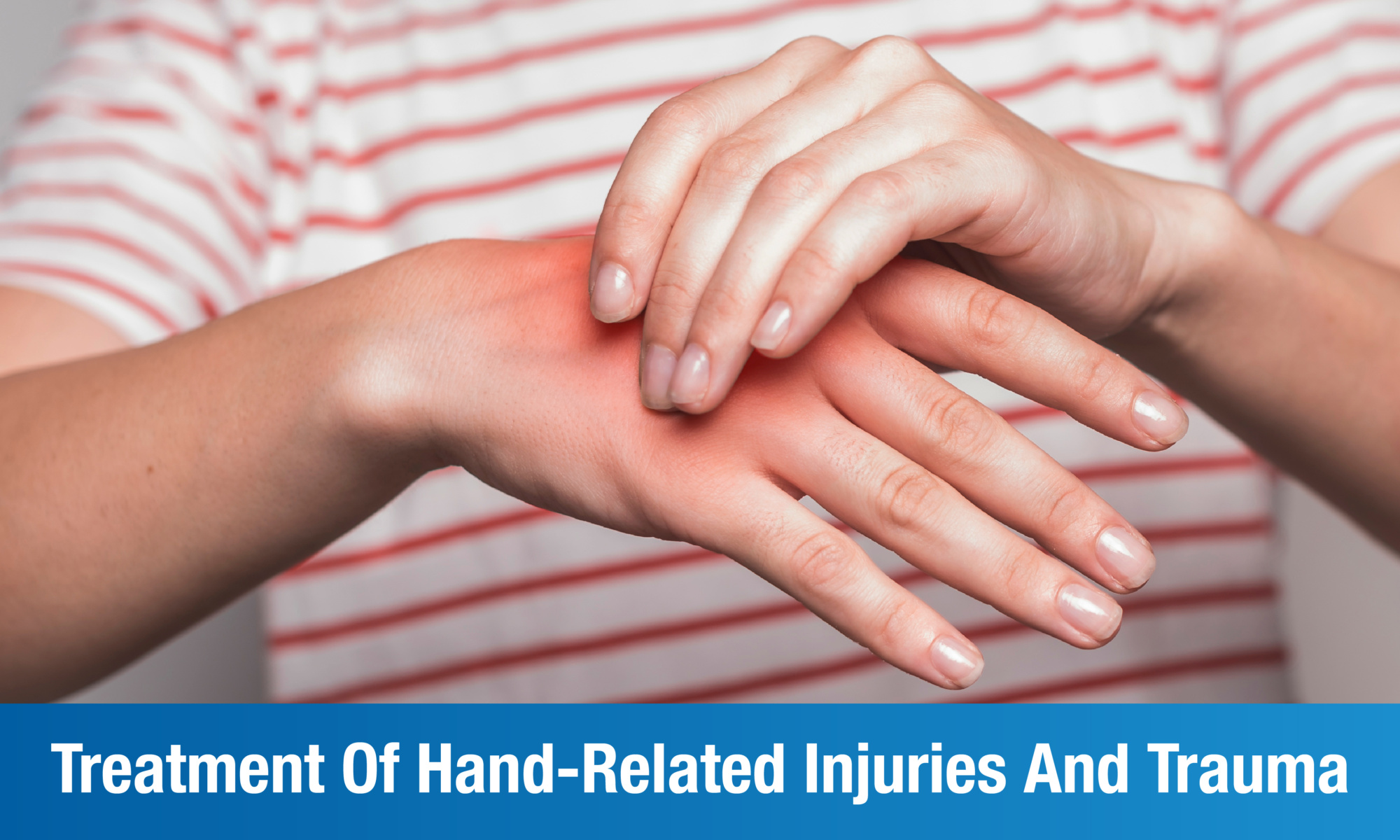
Hands are crucial to so many activities in our daily lives, yet we do not always perceive hand injuries to be a serious matter. While some forms of injury and trauma may indeed heal quickly, others are more serious and may even point to an underlying condition. In certain cases, hand injuries may require a course of hand rehabilitation to fully restore normal abilities and heal the pain. Here’s a quick guide going over what that looks like.
What is a hand injury?
A hand injury refers to any form of injury or trauma that affects the hands, wrists, or fingers. Injuries of this nature can range from simple cuts and burns on the surface, to more serious trauma that affects the nerves in the hand. Hand injuries require prompt attention and swift treatment so that the patient is able to make a complete recovery.
Types of hand injuries and trauma
There are several types of hand injuries one might experience, from mild cuts that can be treated at home, to severe fractures or infections that require professional help. Some of the commonly witnessed types include:
- Abrasions: These refer to a scraping away of the skin from contact with a rough surface. There is usually some skin loss and little to no blood loss.
- Lacerations: These are deep cuts to the hand, usually from a sharp object, and involve loss of blood. They need to be cleaned and dressed properly, and may require stitches based on severity.
- Burns: These occur due to heat, electrical, or chemical sources. First-degree burns are less serious and typically only cause localised pain. Second and third-degree burns are more serious, with some causing extensive nerve damage.
- Bone dislocations and fractures: These involve trauma to the bones or joints. Dislocations occur when two connected bones become separated, while fractures are partial or complete breaks in a bone.
- Soft tissue injury: These include sprains, strains, bruises, tendonitis, and stress injuries, and affect tendons or ligaments.
- Infections: Infections can occur from untreated wounds or from exposure to toxins. At the early stages of an infection, antibiotics are usually enough to treat it. Left untreated, however, an infected hand may call for tissue removal and the draining of accumulated pus.
- High-pressure injection injuries: These arise from the use of tools like paint or tattoo guns and typically affect the dominant hand. The injury may appear like a small sore and can require serious attention depending on the pressure of the injection and the temperature.
- Amputations: In certain serious injuries or as the result of disease, the patient may end up losing the hand altogether.
Causes of hand injury
Hand injuries typically occur from daily activities or recreational sports, and can affect people of all ages. Athletes are particularly at risk of injury of all kinds, more so in high-contact sports like football or boxing. In older people, the natural wear and tear of the body as well as the increased risk of falling from poor balance increases the risk of hand injuries. The most common causes of hand injury or trauma include:
- Accidents while performing daily activities, such as cuts and burns while cooking
- Impact or injury from sporting activities
- Accidents while riding a bike or in a car crash
- Wear and tear from ageing or from poor muscle use during weightlifting
- The use of heavy machinery or equipment
Treating hand injuries and trauma
Regardless of the source of the injury or trauma, the patient will need a tailored hand rehabilitation program to recover. Trained therapists at a rehabilitation clinic will assess the hand to determine the best way to minimize pain, strengthen the muscles, and restore functionality for daily activities like eating or dressing. If the hand is lost altogether in the injury or if it has been amputated to prevent infection from spreading, the therapist will guide the patient through using assistive devices. Some of the activities that the therapist might recommend for a patient include:
- Exercises to improve range of motion, strength, and dexterity
- Scar tissue management
- Therapeutic modalities for joint/muscle stiffness
- Compression therapy and edema management
- Custom orthotics to support the hand after the injury or to correct a deformity
- Training for the use of prosthetics or assistive devices
- Energy conservation training
Hand injuries and trauma are often regarded as less serious than other types of injury, but they require due care all the same. With proper hand rehabilitation, the patient can safely recover their facilities. In addition, taking suitable preventive care during sporting activities or any other lifestyle activities will help to reduce the risk of hand injury and ensure healthy functionality.










